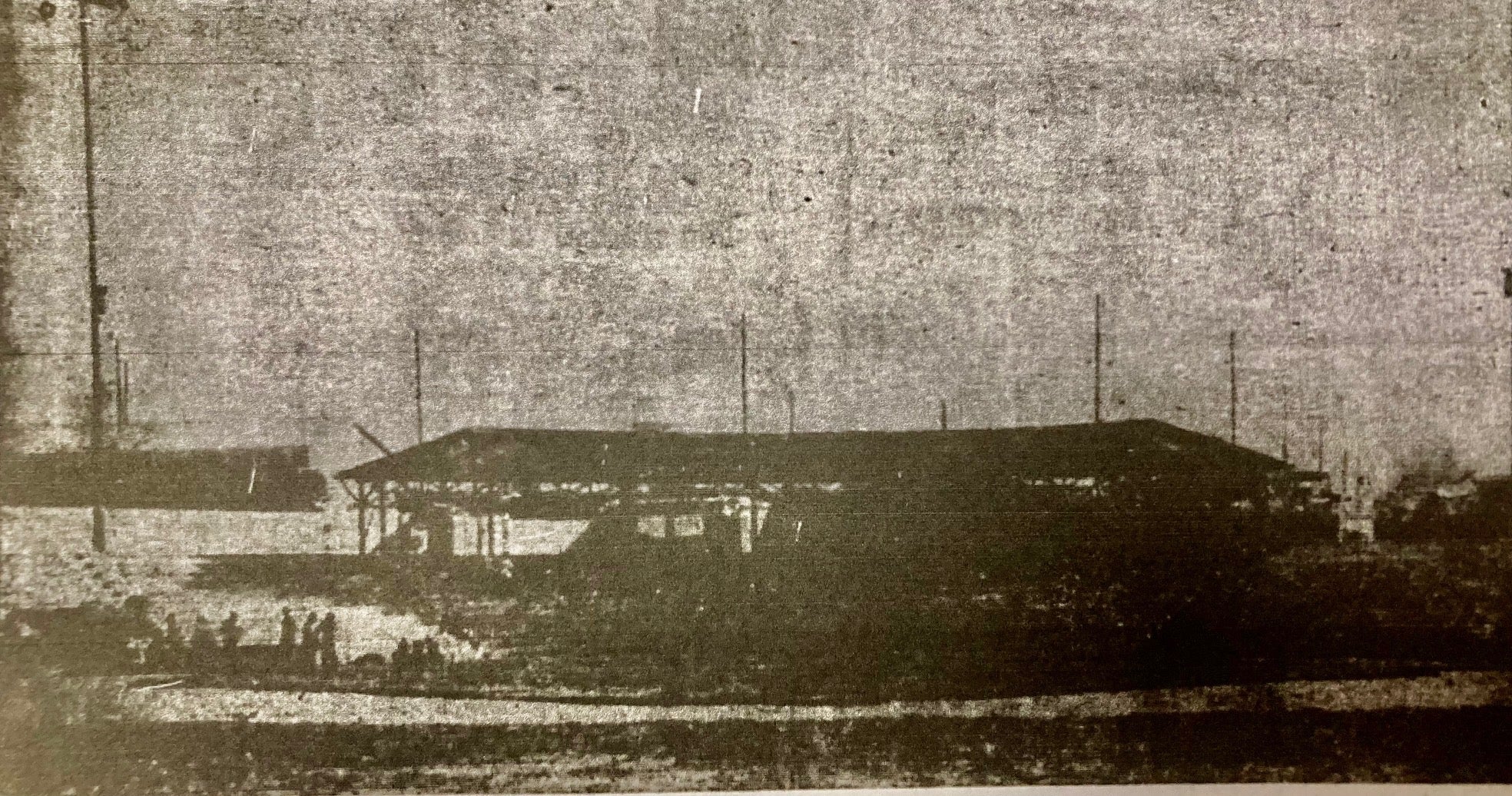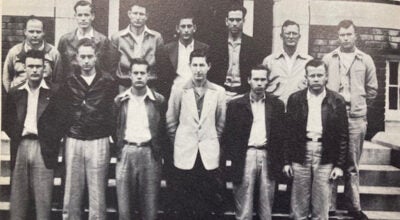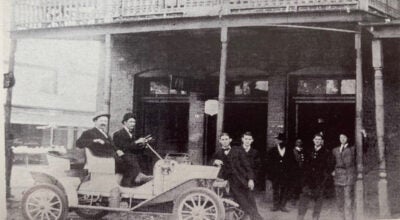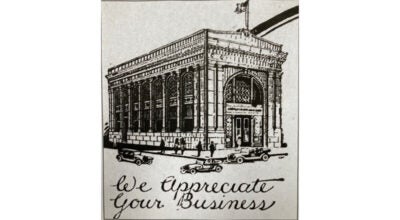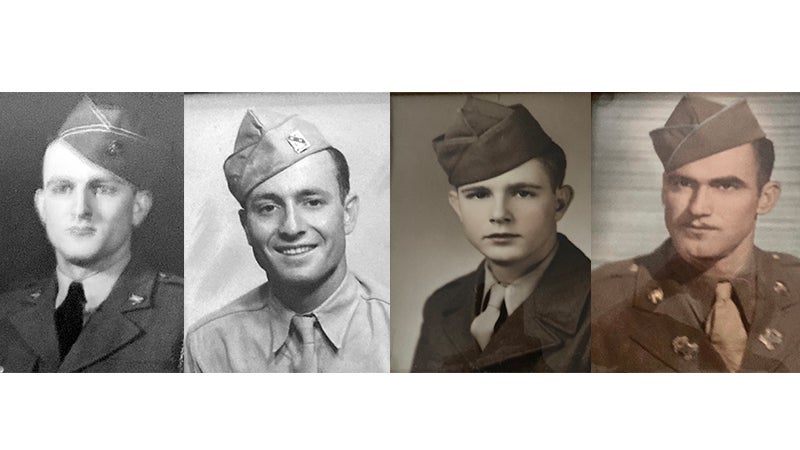REMEMBER WHEN: The New Athletic Stadium 1949-50
Published 10:26 pm Friday, November 6, 2020
|
Getting your Trinity Audio player ready...
|
For thirty years or so from a few years before 1920 until 1950, the high school football games were held in the daylight
hours behind the East Three Notch School or the Church Street School which was the high school beginning in 1923 until 1939 when Andalusia High School was built.
After World War II, the City Recreation Board of the City of Andalusia started making plans for a public swimming pool and an athletic stadium. The long-range plan for financing the project was through a municipal tax on tobacco when a city ordinance was amended in 1949. The Tracy Wilder administration which started in 1948 started negotiations with the City Board of Education by obtaining title to property in a
natural gulley located behind the high school.
The Andalusia Star News reported the progress outlined above beginning in June 1949.
September 8, 1949 – “Specifications are being completed for the construction of the new football-baseball stadium to be erected at the rear of the high school city, Recreation Board Chairman Monroe Newberry has announced. A concrete stadium with seating capacity of between 3,000 and 3,600 will be built according to Newberry who said work on the project should be underway within another two weeks. The stadium will probably be used for the first time during the 1950 baseball year.”
September 15, 1949 – “Bids have been invited from local contractors for the concrete stadium. Work on clearing the field site, earth moving, and tree cutting is expected to be under way in another ten days. Plans call for the new field which will be devoted to football, baseball, and track to be in use early next year. Between 3500 and 4000 seats will be the capacity of the new stadium. The placing of fences, gates, construction of field houses, storage space and rest room facilities, ticket offices, and umpire and referee rooms are contemplated in additional plans. In an announcement made at one of the Andalusia Arrows play-off games, Mayor Wilder explained plans for the new athletic field and related that the program was part of a long-range idea to provide other recreational facilities including tennis courts, picnic grounds, and a swimming pool in the vicinity of the new stadium.”
October 6, 1949 – “Steady progress is being made in work on Andalusia’s new athletic stadium where dirt moving equipment of the city is in operation.”
October 13, 1949 – “The bowl is fast taking shape. All poles for lighting and for the tilted steel roof over the grandstand will be placed behind the seats. Not a seat in the house will be back of a pole either for baseball or football. Radio and press boxes will be placed high above the stands on the 50 yard line for football and in left field for baseball. “
November 10, 1949 – “City Engineer W. B. McDonald announced that pouring of the first concrete in the new Andalusia Athletic Stadium for which a $100,000. bond issue has been approved was accomplished Tuesday. He also stated that practically all grading at the site has been completed and continuation of the work will be dependent on weather conditions.”
December 22, 1949 – “A dash of cold water was tossed on hopes to secure a freshmen college football game for Andalusia’s new stadium next fall in the recent decision of Southeastern Conference authorities defining policies on first year grid contests. The Conference has decided that no college member should permit a freshman team to participate in more than three games each year and every game would have to be played ‘on campus’ of one of the participating institutions. War Eagle alumni had felt that with Big Boy (‘Call me Charles’) Little in the Auburn first year lineup, an overflow crowd could be assured for any Alabama Poly game here. Alabama alumni of Covington County for several years have sought to bring the Crimson Tide frosh to Andalusia for a tilt.”
March 9, 1950 – “New $115,000. Stadium – A parking area is to be black-topped to insure adequate storage for cars. A street is to be paved linking the stadium with East Three Notch Street. All traffic will move to the park by a hard surface route.”
March 23, 1950 – A 4-H Club rally that will attract every boy and girl member from Covington County, a group that may total 3,000, is scheduled for the new athletic stadium in Andalusia. A concert by the Andalusia High School band will open the meeting.”
April 6, 1950 – “The new Andalusia City Athletic Stadium will be the site of a sunrise ceremony at 5:30 a. m. on Easter morn.”
April 13, 1950 – “In the first track and field meet in Andalusia’s new $120,000. stadium, Murphy Hi of Mobile outdistanced Andy Hi by a count of 73-40.”
April 13, 1950 – “Baseball was the Lions Club program on Wednesday as Andalusia Arrows enthusiasts put a fuse to interest that it is hoped will dynamite attendance prospects for the opening game of the year. Bellaire Krudop in a few hundred words told of the plans to SET A CLASS D OPENING DAY RECORD! Andy Floyd detailed some of the plans for the parade that will be part of the opening night stunts. Floyd said that invitations were being extended to mayors and city officials of all surrounding towns to attend the initial game of the year when the new Athletic Stadium will be formally opened.”
May 11, 1950 – “A sparkling fireworks program that has never been equaled in Andalusia is on schedule for the Defense Show on Friday night in the new Municipal Stadium. A 105 mm cannon will be wheeled to home plate and will be fired thrice. The stadium track will be used for the review of National Guard equipment.”
May 18, 1950 – “Everything but the A-bomb and the H-bomb Is what is being promised for celebrations that will be held in Andalusia to mark Armed Forces Day. On Friday night, a mammoth fireworks display will preceed the Arrows-Enterprise baseball game. Mayor Wilder has issued proclamations declaring Friday National Guard Day and Saturday Armed Forces Day. Downtown merchants have been asked to have flags flying both days in front of their business establishments. A wing of 72 Alabama Air National Guard planes will fly over the city during the parade on Saturday.”
July 20, 1950 – “The Andy Hi Bulldog Band will hold an open-air concert in the new municipal stadium on Tuesday night after returning from their summer camp at Perdido Beach.”
September 7, 1950 – “To be featured at the All-Night Quartet Singing at the Andalusia Municipal Stadium Saturday night are the Rhythmettes, an all-girl quartet from Birmingham, and the Statesman Quartet. The singing is sponsored by the Andalusia Lions Club and the Andalusia Pilot Club who will be in charge of concessions.”
September 14, 1950 – “The sensational radio-recording star Hank Williams, ‘Mr. Lovesick Blues,’ with his entire Grand Ole Opry Show from Nashville, Tennessee will be in person on September 17 at the Andalusia Municipal Stadium – Afternoon at 3:30 and Night at 8:00. Sponsored by the Andalusia Jaycees. Proceeds to be used on the purchase of an iron lung for Covington County.”
September 7, 1950 – “The Andy Hi football season kicks off in just eight more days with the demons of Red Level as the opposition. Coaches Bill Stanford and H. M. McInnish were all smiles last night over the performances of their team at practice.”
September 14, 1950 – “It’s the first chapter of a new verse for Andy Hi football. Kicking off the 1950 gridiron season against Red Level in the new Municipal Stadium, the Bulldogs will be shifting from a one-man offensive of by-gone years to play highlighting teamwork. Gone from the ranks of the Crimsons is ‘Big Boy’ Little who for the past several years carried the brunt of touchdown manufacture for Andy elevens.
Missing, too, are a host of other lettermen but Coaches Stanford and McInnish have geared for duty a group of fast-stepping ball carriers with some plucky line defenders who are determined to make up in scrap their lack of heft.”
September 21, 2020 – “A strong Red Level High School football team that will win some grid games this year bowed to Andy Hi on Friday night of last week, 31-0. The Bulldogs players in the new $150,000. Municipal Stadium. Andy Hi looked like a million bucks in that new football bowl. A squad of eight Andy Hi cheerleaders led the Crimson and White jersied Bulldogs out onto the greenwards. Cheerleaders directing the pep generation for Andy Hi were Louise Pelham O’Neal, Jerry Shreve, Dorothy Ann Fowler, Edith Bell, Lou Ann Turner, Shirley Wallace, and Jill Carpenter with Jeanette Reeves as Boss Cheer femme. Each girl takes over turnabout as acting cheer captain. The Red Level noise was administered by Irene Cumbie, Anne Grantham, Lynn Sweatt, Lillian Connally, Geraldine Taylor, Patricia Posey, and Fred Burks. Just before kickoff, Riley Taylor, president of the Andy Hi Student Council, welcomed Red Level visitors and the public to the first game of the year with a few well-chosen words over the PA system.”
October 26, 1950 – “The U. S. Marine Band presented a concert at the Municipal Stadium on October 28th under the sponsorship of the Band Parents’ Club.”
November 23, 1950 – “The midget football championship game on Friday night of last week was concluded in a tie – Church Street, 12 – East Three Notch, 12. A top sidelight of the game played in the Municipal Stadium was the presentation of watches to the two coaches, Thomas Rayfield of East Three Notch School, and Charles Pearce of Church Street School. Both coaches are high school teachers. The gifts were a complete surprise to the coaches.”
December 14, 1950 – “More than 850 children of the Church Street and East Three Notch Street grammar schools will participate in a Christmas songfest Tuesday afternoon, December 19. The sing will be held in the Municipal Stadium at 1:15 p.m. The familiar carols will highlight the musical program to which the public has been invited. There will be no admission charge.”
Well, readers, this is a brief summary of news reports regarding the stadium that was referred to as the Athletic Stadium in 1949 until spring of 1950 when references to the new facility were of the “Municipal Stadium.” We now call it the Andalusia High School Stadium since at some point in time, the City of Andalusia turned the title over to the City School Board.
This year of 2020 is the 70th anniversary of the stadium. It has been remodeled and updated at least twice. The tennis courts that were originally a part of the recreational complex are no longer located up the hill from the terraced parking lot. Some citizens my age or older may remember when several tennis courts were located on what is now First Avenue that connects to Henderson Street. There was never a swimming pool built in the vicinity which was mentioned in the plans by the Recreation Board. Of course, the reason may be because the original estimate of the stadium was $115,000. That total ended up being $150,000. according to all accounts in the old newspapers.
The original bronze marker affixed to the stadium wall is now in the AHS Heritage Room. Credit was given to the mayor and city council, the city school board, and the recreation board. One can see by all of the activity staged in the Municipal Stadium in 1950 that the stadium transformed from a gulley became used for many events throughout that year and the next 70 years – graduations, youth baseball, track meets, patriotic celebrations, gospel all-night singings, country music shows, etc.
Also reported in the newspaper on October 13,1949 – “Covington County Training School Sponsors First Grid Team – Students of CCTS are enthusiastically going about the task of equipping a football team, the first football team in a generation. About five games are to be scheduled for this season.” These games were played in the new Municipal Stadium.
During this Thanksgiving season, we all should be thankful that someone with a vision saw that gulley with its potential for a stadium. It was a “first-class stadium” in 1950 and still a “landmark stadium” today with astro-turf field, electronic scoreboard, hospitality room, technically savvy press boxes, architectural features throughout, modern lighting and sound, updated seating, innovative concessions stands, and field house exemplary of college facilities. Again, when we Remember When, it is fitting to think back and recognize the city fathers and town leaders whose insight and determination helped make the stadium a reality.
If there are any Andy Hi or Red Level football players still living who played in that first football game in the new stadium in September 1950 or players who played with Covington County Training School that season, the coaches would like to know about it. Billy Hamiter is one of those football stars of 1950 who is still around today. Are there others? Let us recognize these.
Sue Bass Wilson, AHS Class of 1965, is a local real estate broker and long-time member of the Covington Historical Society. She can be reached at suebwilson47@gmail.com.



